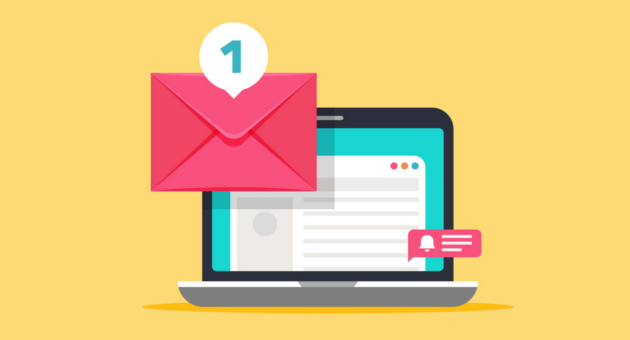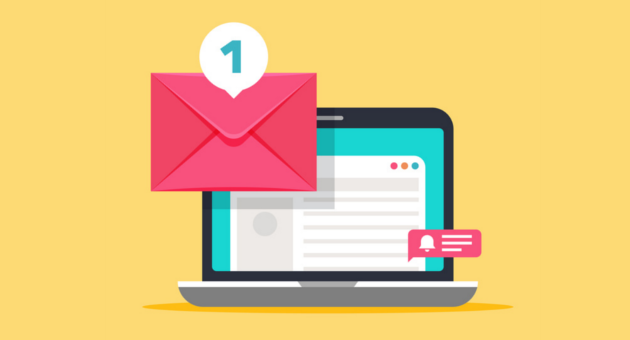
Single opt-in, double opt-in, what are those terms? What do they mean?
And above all, how do they affect your mass mailing campaigns?
The usefulness of opt-in and specifically double opt-in goes beyond what we can think of in the first instance, that’s why we are going to talk about this concept in this post.
So that you understand that, far from being a useless option, this type of form will protect your mailing list.
We will focus mainly on the relevance of double opt-in forms, but we will also explain some other important aspects you should consider.
· What is opt-in in email marketing? Opt-in explained without technical terms.
The opt-in process usually works more or less like this.
You create a page and embed a subscription form to allow visitors to register and receive updates from you.
When a user who is on your site is interested in the content you are offering, they can fill in their data in a form, which will be sent to the server of the email marketing software, you are using.
When they click send, this new contact will be registered in your email list.
And from there, you will be able to talk to that person through your mass mailing campaigns.
Sounds easy, doesn’t it?
Seen like that, it is, and quite a lot.
► These steps we saw would be the single opt-in process.
This brings us to the most logical question. For example, many people don’t understand wy they should use double opt-in forms. If it’s so simple, why would other opt-in methods be needed?
There are several answers to that question. Keep reading.

· Mistakes and problems in the opt-in process
One of the first things we have to consider is something extremely obvious:
People make mistakes
Yes.
Surprising, isn’t it?
Jokes aside, the truth is that it’s very easy and happens all the time; we are in a hurry and end up miswriting our email.
The form can let us know if we’ve entered any relevant wrong information (such as for example, if we don’t include the domain extension), but if the error is minimal, like swapping one letter for another, the form will not notify us.
The machine doesn’t know that; how would it know?
Therefore, the software would consider the email address as correct.
And for us, who are used to writing our email repeatedly, the mistake may go unnoticed.
Because in an opt-in process without confirmation (single opt-in), if there are no serious errors, the system will assume that everything worked fine.
► What happens if the error is not detected?
Nothing serious.
Or something very serious.
The wrong email will be registered in your contact list.
So when you send out a mass mailing campaign, the email may bounce back, which would generate an error message saying the email address doesn’t exist, at best.
And at worst, the email could be received by someone else.
This could go further and have legal implications because you would be sending your emails to people who didn’t give the consent to receive these messages.
Now maybe you think that the possibility of that happening is low, and that the risk would be compensated in exchange for offering a simple and fast opt-in process.
The reality is that, in this case, everything will depend on something intangible:
◆ You would be betting on luck.
◆ The monthly number of new subscribers
The more subscribers you get every month, the higher the chances of problems.
But things can start to get complicated if it is a non-human error.

· Malicious registrations and scripts
The machines come into play.
This possibility, although not the first that comes to mind, is something much more serious due to the damage that this type of email could cause to your company.
What can happen in this case is that someone could use:
◆ A bot
◆ Or a simple script
To generate false entries in subscription forms.
► Why would this happen?
The subject of bots is complex.
A bot is a small computer program, which for the case that interests us here, the software would be created to crawl web pages and search for forms.
Any type of form.
It doesn’t really matter what the theme of the site is.
Most likely, these bots are really looking for contact forms or blog comments:
◆ To leave fake comments with links to the page that will be promoted (that is used for seo+ issues, one assumes)
◆ Or for phishing (information theft)
What happens is that bots can’t distinguish between different types of online forms (or really don’t care) and therefore, they will just fill out all forms found by the software.
With fake data, of course.
So, in a short time, you could have hundreds of contacts in your email list; which could affect the result of your mass mailing campaigns, because, in this case, there would be many errors and bounces.
Gradually (or quickly, depending on the volume), this will end up harming your email marketing strategy.
► Malicious opt-ins
On the other hand, it is also possible to be attacked by people or malicious companies that are trying to register thousands of fake emails on your opt-in forms.
Why?
What are the reasons for adding invalid email addresses to a subscription form?
That could be done by people wanting to harm your company for any reason, simple coincidences, or hackers who are learning and are doing tests on random forms.
It is very difficult to know, but it is something that can happen.

· Opt-ins maliciosos
Given the problems, what are the available solutions?
There are several solutions to these problems.
One of the most used is the use of a captcha.
What is a captcha?
Surely on many pages, you have already seen forms that, before allowing a new registration, will ask some questions or show Some images for the user to choose from.
A captcha is a safe and effective system, although some users have difficulties or don’t like having to complete them.
This can be a little irritating.
Especially in some cases where the captcha can be especially complicated or difficult to solve.
In addition to the possible discomfort that the user may have, although it is a solution to the problem presented by bots, the reality is that:
Typing errors when filling out the form
And malicious users who register other people’s emails or invalid information
Therefore, a captcha is a system more focused on protecting the forms against scripts and other autofill tools.
However, this doesn’t prevent human errors, and if the email entered is active, another person will receive the message, as we saw at the beginning of the article.
This is unavoidable using these types of tools.
That’s why the most effective solution is to work with double opt-in forms.
We left it for last, as it is the most effective option.
How does a double opt-in form work?
Double opt-in is a process that works as follows.
You have a form on your website, the visitor registers and the contact details will be saved in your mailing list, but the subscriber won’t be active.
Until now, the process would be similar to a single opt-in form that we saw before.
What’s different about this process?
That as soon as the user leaves the email in the form, the email marketing software you are using will send them an email with a confirmation link.
When the visitor clicks on the confirmation link, the contact, which has already been saved but is still inactive, will be activated and can start receiving newsletters.
Only after clicking on the confirmation link.
The process is just as simple; the visitor will only have to click once more to confirm they really want to receive your emails.
This process ensures that:
- The email is correct. Otherwise, the link would not be received.
- The request was actually made by a real person who is interested in your emails
It is, therefore, the safest option for avoiding problems.
And it also protects your email list from bots, as most scripts are not created with features for receiving emails and clicking on confirmation links. But if you’re still facing advanced attacks, you could even combine the double opt-in process with a captcha, for example.
I hope this little guide helps you with questions about how it works, and the reasons behind using double opt-in.